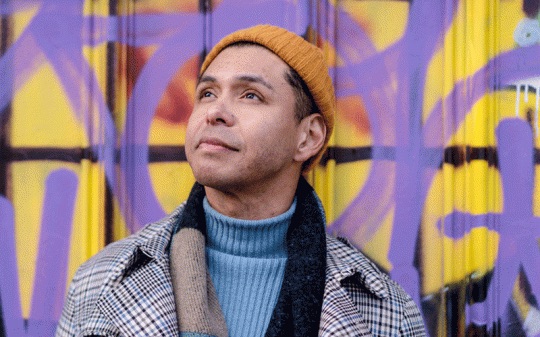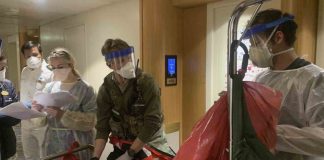The exact method that’s now cured two men of HIV infection is not one that’s going to be widely available to the nearly 38 million people worldwide living with the virus, experts say.
Still, the news has rekindled hopes of finally winning the war against the virus that causes AIDS.
The Berlin and London patients benefited from a combination of medical and genetic chance, the experts explained. And even with luck on their side, the two men had to undergo a grueling treatment that could easily have killed them.
“There are a number of circumstances that limit the applicability of this to people around the world,” said Rowena Johnston, vice president and director of research at amfAR, The Foundation for AIDS Research.
But the two cases — along with a third reported cure in Düsseldorf, Germany — point the way to a potential genetic cure for HIV, Johnston said.
“It’s a long way away. I’m not saying that’s happening tomorrow. But it gives you the sense that it might be worth putting in the effort to see if we can develop the technologies to make that happen,” Johnston said.
The “London patient,” 40-year-old Adam Castillejo, had a bone marrow transplant designed to beat an otherwise untreatable blood cancer called Hodgkin’s lymphoma, just as his “Berlin patient” predecessor Timothy Ray Brown did to cure his leukemia.
In both cases, the critical transplant came from a donor with a mutation in a protein found on the surface of white blood cells called CCR5.
“HIV uses this protein to gain entry into the cells it infects,” Johnston said. “If you’re a person with this genetic mutation, which means you don’t have that protein, it’s almost impossible for HIV to infect any of your cells.”
As a result, the two men essentially received a new immune system with a built-in genetic resistance to HIV. Doctors theorize that whatever HIV was left hiding in their systems after the treatment wilted away because it had nowhere left to spread.
“Even if the virus wants to go out and find a cell to infect, there are no cells it can infect, so it just dies out,” Johnston said. “That’s one thought of how this transplant system works.”
The problems with applying this exact cure to everyone now living with HIV are numerous.
For one thing, it involves a bone marrow transplant that wipes out a person’s immune system — a radical procedure reserved for people with fatal conditions that aren’t responding to other treatments, said Dr. Antonio Urbina, medical director at the Institute for Advanced Medicine at Mount Sinai, in New York City.
“This patient went through a lot, in terms of the stem cell transplant and all of the complications that can be incurred from that,” he said. “This is something that could have a high patient mortality. To scale that up to other patients would be difficult.”
Furthermore, the patient has to have a bone marrow-matched donor who carries this specific mutation in the CCR5 protein, Urbina and Johnston noted.
This very rare mutation typically only occurs in people with northern European or Caucasian ancestry, the experts said.
“In this case, what was unique was even though the patient was from South Africa, his ancestry was partially Dutch, and they were able to find a German donor who was a match genetically for this patient,” Urbina said.
As a result, this specific cure is not going to be useful in more than a handful of patients, Urbina said.
But there are important lessons to be learned from the men cured of HIV infection in this way.
Twelve years passed after the announcement of the Berlin patient’s cure, and those were years spent wondering whether Brown had benefited from a freak accident of treatment, Johnston said.
“Certainly in that amount of time you can start to wonder what strange set of unrepeatable circumstances happened in the case of the Berlin patient,” she said. “Now that it’s happened again in the London patient, we are getting the sense there was nothing miraculous or weird or once-in-a-lifetime about the Berlin patient. This really is possible.”
Even better, there’s also now a third case — a patient in Düsseldorf who had a bone marrow transplant and now appears to be HIV-free, Johnston said. Researchers continue to follow this third patient.
The Berlin and London patients both were born with different versions of the CCR5 protein, so their successful treatment also shows that their original genetics don’t matter as long as the genes are replaced with the HIV-resistant mutation, she added.
All of this points toward a potential gene therapy cure for HIV, Johnston said.
“Let’s say you could take my stem cells, put them in a dish, give my cells that genetic mutation and infuse them back into me,” she said. “Since we now have a pretty good sense that this mutation might be very important, then we have a very good idea that could be a very fruitful way forward.”
Even better, doctors could one day potentially create an injectable cure that would add this gene mutation on the fly.
“What if we could work out a way of doing gene therapy that actually you would inject into the person’s arm the actual gene therapy tools, and then they would seek out the cells they need to do the editing on and do it inside the cells of the person,” Johnston said.
Such a cure would not only clear HIV from a person’s system, but potentially would make them immune from further infection, she said.
“This is actually going the whole way, removing all of the infectious virus from a person’s body,” Johnston said. “It might actually make these guys, now that they have immune systems that don’t have the CCR5 vulnerability, it might actually almost eliminate the possibility they would ever be HIV-infected again.”













